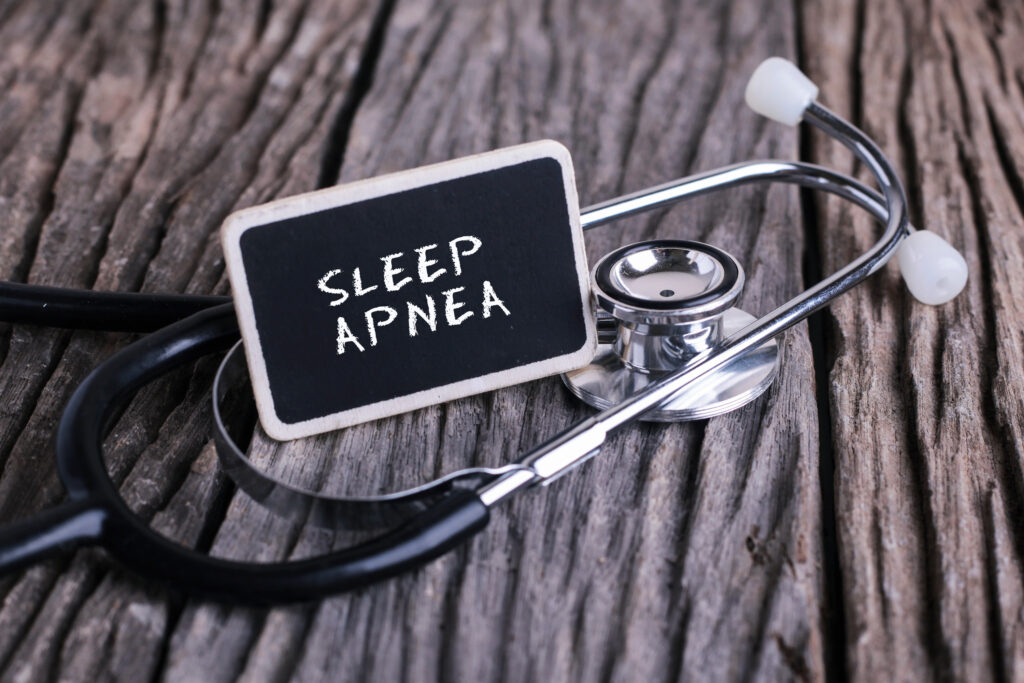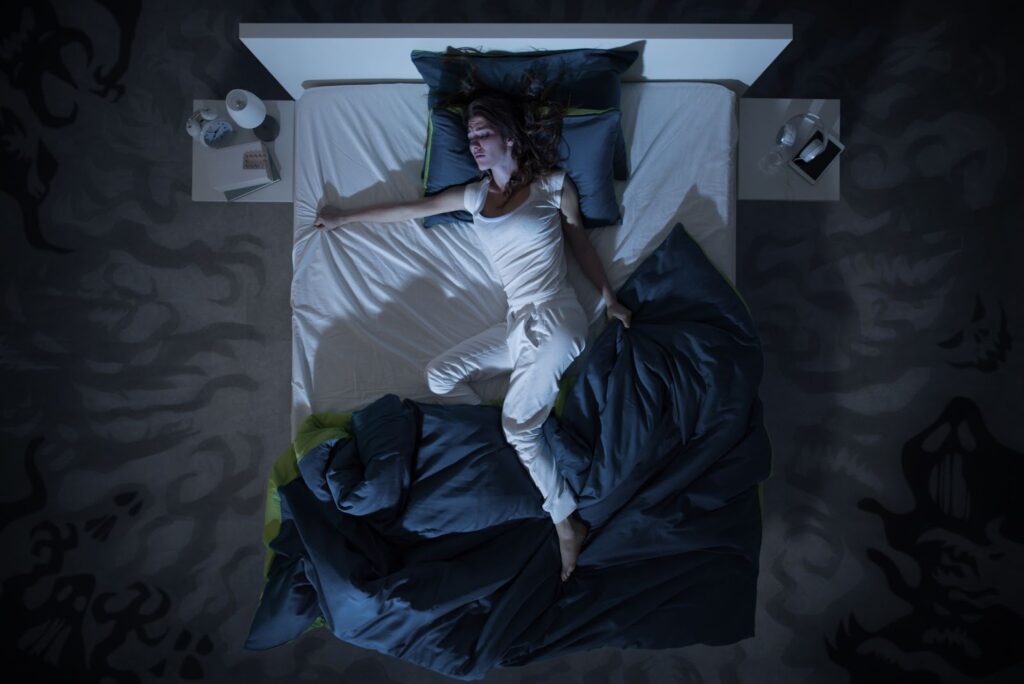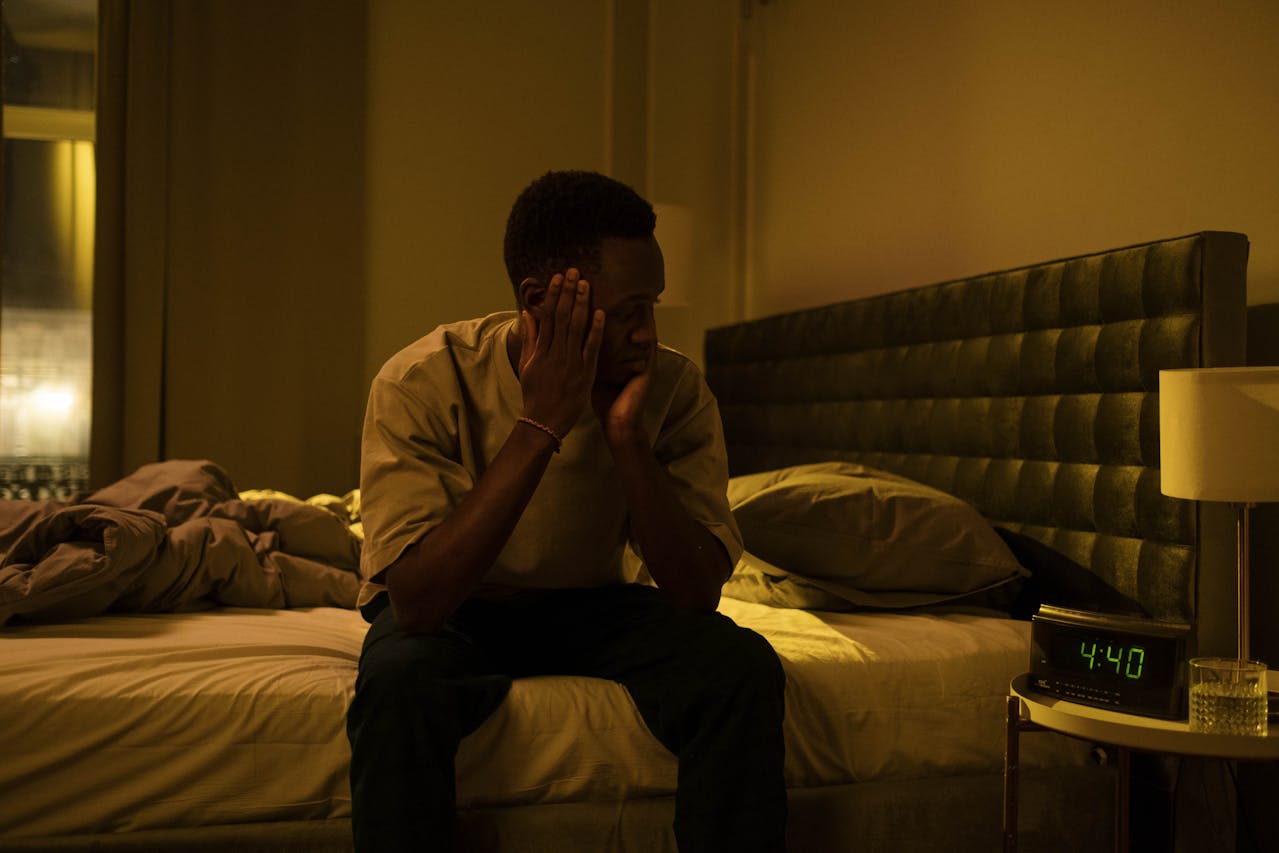The fields of medicine and mental health are constantly searching for treatments and therapies that improve quality of life by decreasing symptoms. Oftentimes this includes side effects. It seems that every time we find a good answer to one problem, it uncovers or creates another. Sleep difficulties can fit this mold. They are very prevalent with 33% to 50% of adults reporting difficulty with initiation or maintenance of sleep (falling or staying asleep), and upwards of 18% of adults meet criteria for an insomnia disorder 1. Sleep disruptions cause numerous problems, inclusive of deficits of cognition, immune function, and metabolic function1.

In mental health, we often strive for the balance between acceptance of our difficulties and effort
toward improvement of them. Sleep or lack thereof, commonly called insomnia, is no different in this regard. We can take medications that target sleep and find a way to “put up” with daytime sleepiness or worries about what we may say or do while under the influence of those medications. Perhaps you haven’t tried a medication, but are trying to treat your sleep problems yourself, by using medications you already have or drinking more at night. These, too, can create additional problems with regard to health, work or school, and relationships.
We are offering a different path. It is not a magic pill and takes consistent effort, but it is one without side effects. Cognitive Behavioral Therapy for Insomnia (CBT-I) is a treatment aimed to decrease behavioral insomnia. Consider what we call the 3 P’s of insomnia. People often have predisposing factors which may increase likelihood of insomnia, such being a light sleeper, high trait anxiety, or emotional arousal. The next “P” relates to precipitating factors, or those which are likely to create the initial weeks of insomnia, such things as having an infant in the house, going to the hospital for an extended time, a bout of depression that affects sleep, or and increase in stress, among others. These precipitating factors increase sleep problems beyond the threshold for insomnia. Most importantly are the perpetuating factors, or the things we do to try to help the insomnia but create an endless cycle of sleep problems. Examples of these include going to bed earlier than usual, sleeping in after a rough night of sleep, and worrying about sleep, to name a few.
These perpetuating factors, as well as those unnamed, are the targets of treatment. We first assess all behaviors surrounding sleep that could be potential targets, then collaborate to set up sleep practices that encourage good sleep, such as attending to unhelpful cognitions about sleep, improving bedroom conditions, setting a consistent time in bed, decreasing time in bed for greater sleep efficiency, etc. Although consistently performing these behaviors is more difficult on the front end, the result is more efficient sleep leading to feeling better in multiple facets of life.
Improvements made last far beyond the end of treatment, and you can become your own best sleep expert. Finally, CBT-I has no side effects.
1 Rossman, J. (2019). Cognitive-behavioral therapy for insomnia: an effective and underutilized treatment for insomnia. American journal of lifestyle medicine, 13(6), 544-547.
Sleep Disorders
Treatment for Insomnia and Sleep Disorders
Trouble sleeping?
Are you having trouble falling asleep? Staying asleep? Are you having nightmares that wake you in the night? Do you have sleep apnea but struggle to use the CPAP or device as prescribed? Your MindWell NYC therapist will assess your sleep to determine if you need treatment for insomnia or to help you with using assistive devices, such as the CPAP, with sleep. Cognitive Behavioral Therapy for Insomnia (CBT-I) is a short-term, evidence-based therapy that will give you the practical tools needed to get a good night’s sleep and keep up healthy sleep habits. Your therapist will also help you stick with your assistive devices if applicable.
At MindWell NYC, we offer:
Convenient and short-term individual therapy focused on improving sleep habits and behaviors
such as:
o Trouble falling asleep
o Trouble staying asleep
o Nightmares
o Sleep apnea/CPAP adherence
Many people have difficulties with sleep. In fact, between 33% and 50% of adults report difficulty falling or staying asleep 1 . Upwards of 18% of adults meet criteria for an Insomnia Disorder. Problems with sleep create a ripple effect among numerous systems, including immune function, metabolic function, and deficits of cognition replated to processing speed, working memory, and procedural memory. These ripple effects can affect facets of life including school, work, relationships, and performance of athletic or artistic endeavors.
Therapists often strive for the balance between acceptance of our difficulties and efforts toward
improvement of them. Sleep or lack thereof, commonly called insomnia, is no different in this regard. We can take medications that target sleep and find a way to “put up” with daytime sleepiness or worries about what we may say or do while under the influence of those medications. Perhaps you haven’t tried a medication, but are trying to treat your sleep problems yourself, by using medications you already have or drinking more alcohol at night. These, too, can create additional problems regarding health, work or school, and relationships.
Consider what we call the 3 P’s of insomnia. People often have predisposing factors which may increase likelihood of insomnia, such being a light sleeper, high trait anxiety, or emotional arousal. The next “P” relates to precipitating factors, or those which are likely to create the initial weeks of insomnia, such things as having an infant in the house, going to the hospital for an extended time, a bout of depression that affects sleep, or an increase in stress, among others. These precipitating factors increase sleep problems beyond the threshold for insomnia. Most importantly are the perpetuating factors, or the things we do to try to help the insomnia but they end up creating an endless cycle of sleep problems. Examples of these include going to bed earlier than usual, sleeping in after a rough night of sleep, excessive napping, and worrying about sleep, to name a few.
We are offering a different path. It is not a magic pill and takes consistent effort, but it is one without side effects. Cognitive Behavioral Therapy for Insomnia (CBT-I) is a treatment aimed to decrease behavioral insomnia 2. The therapy process takes five to eight weeks and focuses on shifting thoughts and behaviors that affect sleep, or perpetuating factors.
We first assess all behaviors surrounding sleep that could be potential targets, then collaborate to set up sleep practices that encourage good sleep, such as attending to unhelpful cognitions about sleep, improving bedroom conditions, setting a consistent time in bed, decreasing time in bed for greater sleep efficiency, etc. Although consistently performing these behaviors is more difficult on the front end, the result is more efficient sleep leading to feeling better in multiple areas of your life. Improvements made last far beyond the end of treatment, and you can become your own best sleep expert.
Sleep Apnea Treatment

Obstructive sleep apnea (OSA) is the second most common sleep disorder with prevalence rates between 2% and 9% 3. The gold standard treatment currently is Positive Airway Pressure (PAP) but it can be more difficult to start than other therapies. As such, people who can gain significant relief from using the device don’t have the opportunity to experience the relief. At MindWell NYC, assistance with CPAP use for sleep apnea uses cognitive and behavioral techniques such as goal setting, operant conditioning (rewarding behaviors so that they occur more often), mindfulness, and habituation to improve outcomes, improve sleep, and improve mood 4.
Nightmare Treatment

Nightmare treatment lasts three to six weeks, and entails the creating of detailed, less frightening endings for the nightmares that you tend to have repeatedly. With the support of your therapist, you write the entire nightmare. However, you work together to find the place in the dream where it becomes more distressing, and you rewrite the ending in a way that is less so. You then rehearse the re-written dream prior to going to sleep, thereby managing the content of dreams that are distressing 5. You can take control of your nightmares!
2 Muench A, Vargas I, Grandner MA, Ellis JG, Posner D, Bastien CH, Drummond SP, Perlis ML. We know CBT-I works, now what? Fac Rev. 2022 Feb 1;11:4. doi: 10.12703/r/11-4. PMID: 35156100; PMCID: PMC8808745.
3 https://www.thensf.org/sleep-facts-and-statistics/#:~:text=Between%2010%25%20and%2030%25%20of,various%20life%20stages%20than%20men.
4 Keer N, Sharma P, Shrestha R, Freire A, Robinson K, Morris K. 683 Comparison of Telemedicine and In-Person Psychotherapy for CPAP Adherence in a population of Veterans. Sleep. 2021 May 3;44(Suppl 2):A267. doi: 10.1093/sleep/zsab072.681. PMCID: PMC8135741.
5 Aurora, R. N., Zak, R. S., Auerbach, et al. (2010). Best practice guide for the treatment of nightmare disorder in adults. Journal of Clinical Sleep Medicine, 6, 389-401.






